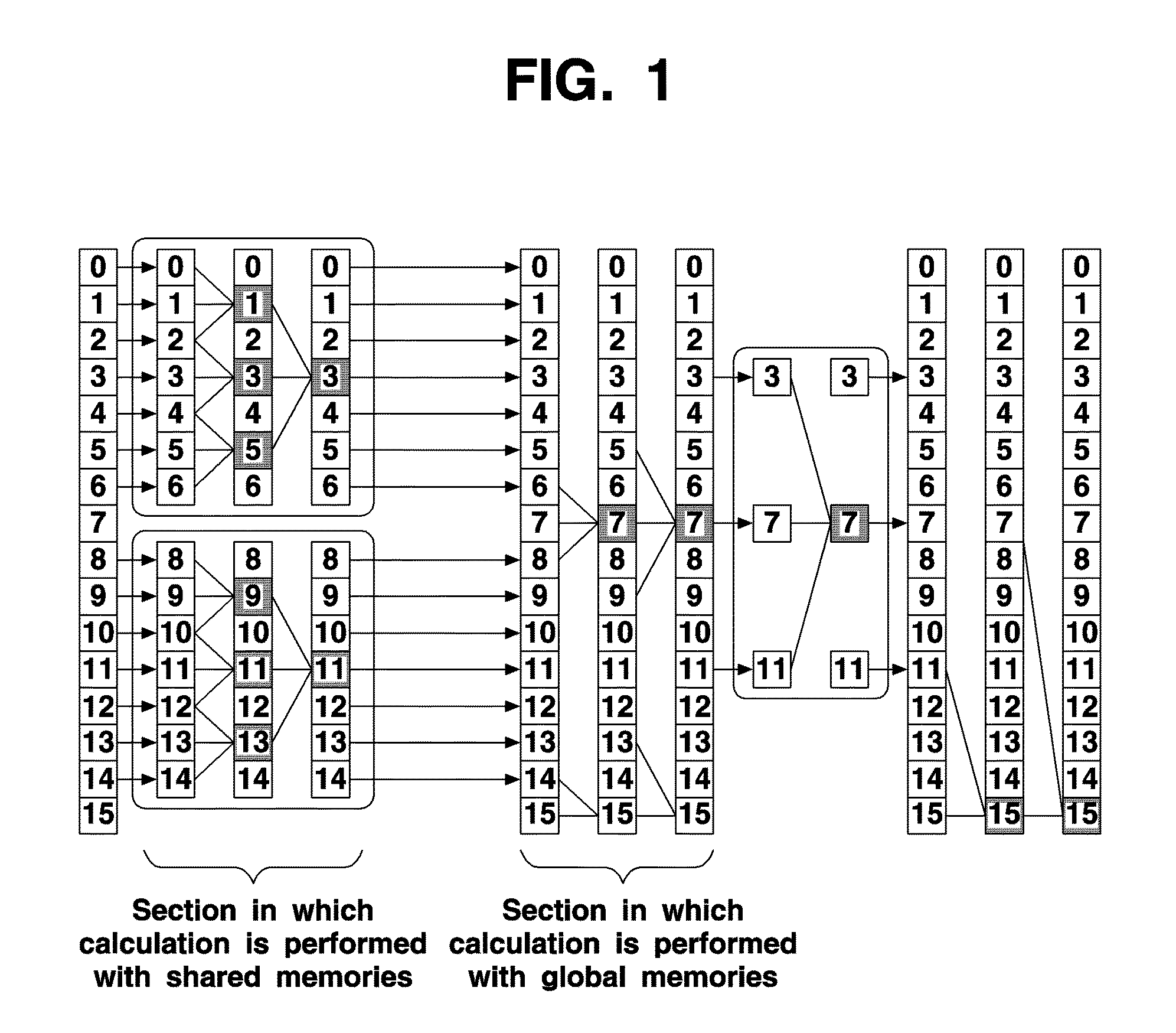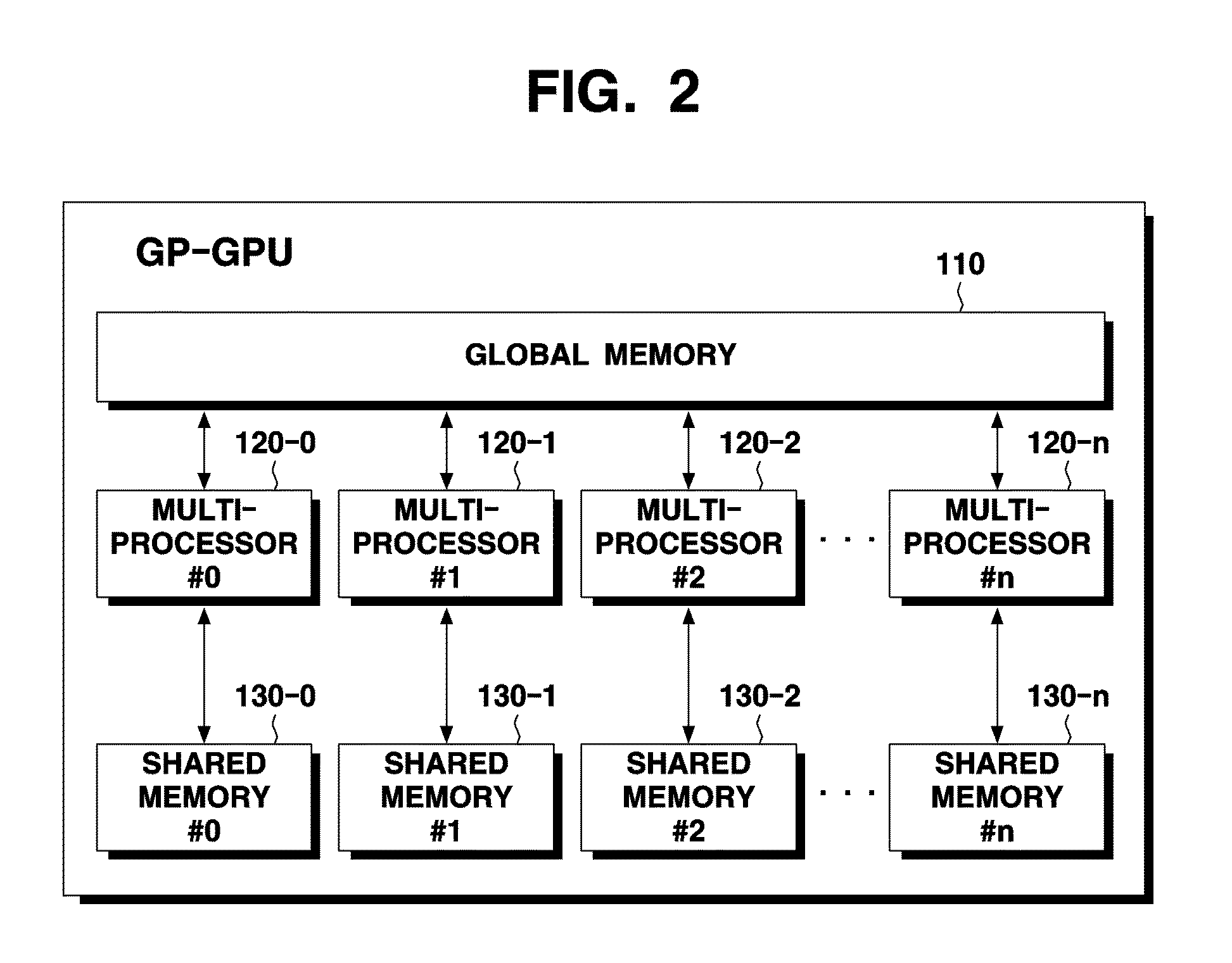Method for processing cr algorithm by actively utilizing shared memory of multi-processor, and processor using the same
a multi-processor and shared memory technology, applied in the direction of memory adressing/allocation/relocation, multi-programming arrangements, instruments, etc., can solve the problems of reducing the cfd speed regarding an image, slow performance, and high processing cost, so as to improve the performance of the entire algorithm and speed up access speed. , the effect of slow access speed
- Summary
- Abstract
- Description
- Claims
- Application Information
AI Technical Summary
Benefits of technology
Problems solved by technology
Method used
Image
Examples
Embodiment Construction
[0025]Reference will now be made in detail to the embodiment of the present general inventive concept, examples of which are illustrated in the accompanying drawings, wherein like reference numerals refer to the like elements throughout. The embodiment is described below in order to explain the present general inventive concept by referring to the drawings.
[0026]FIG. 2 is a block diagram of a GP-GPU according to an exemplary embodiment of the present invention. The GP-GPU according to an exemplary embodiment of the present invention is a processor for performing medical image processing and 3-dimensional visualization.
[0027]The GP-GPU according to an exemplary embodiment of the present invention processes a TDM in accordance with a CR algorithm.
[0028]The GP-GPU which performs the above-described function includes a global memory 110, multi-processors 120-0, 120-1, 120-2, . . . , 120-n, and shared memories 130-0, 130-1, 130-2, . . . , 130-n, as shown in FIG. 2.
[0029]Each of the multi...
PUM
 Login to View More
Login to View More Abstract
Description
Claims
Application Information
 Login to View More
Login to View More - R&D
- Intellectual Property
- Life Sciences
- Materials
- Tech Scout
- Unparalleled Data Quality
- Higher Quality Content
- 60% Fewer Hallucinations
Browse by: Latest US Patents, China's latest patents, Technical Efficacy Thesaurus, Application Domain, Technology Topic, Popular Technical Reports.
© 2025 PatSnap. All rights reserved.Legal|Privacy policy|Modern Slavery Act Transparency Statement|Sitemap|About US| Contact US: help@patsnap.com



